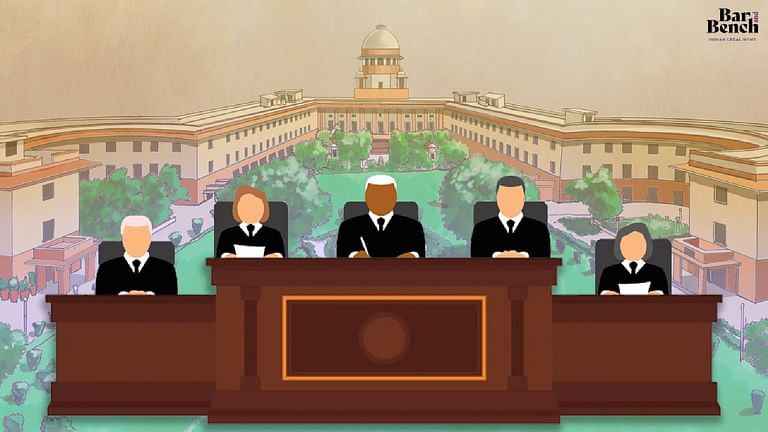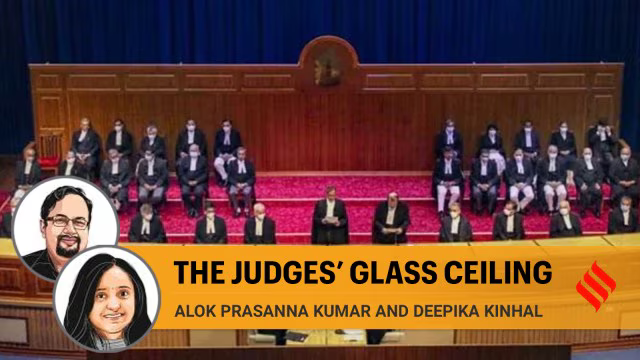
Referral orders to Constitution Benches many times vague, do not give reasons: Vidhi’s Pendency Project report
A well-reasoned referral order is indicative of not only debate and deliberation by the system but also key for transparency.
Transparency is key to the health of any public institution and the judiciary is no exception to this rule. Greater transparency, higher the public trust. For most part, the judiciary speaks to the public through their decisions. For the apex court, some of these are landmark decisions that involve substantial questions of law as to the interpretation of the Constitution.
The outcome of these cases help define the boundaries of the Executive’s powers, ensure civil liberties and rights, strengthen the law-making process and safeguard the Constitution to remain relevant and evolving.
The socio-political change achieved by the decisions of Constitution Benches in the past stands unopposed. However, one must take a step back and reflect on the broader impact such cases have on the justice system. These are time and resource intensive cases that take a toll on the judges, staff, advocates and parties. A thorough deliberation should ensure that a Constitution Bench is warranted for the particular case.
In this context, one critical aspect is the referral order by a division or three-judge bench that refers a case to a larger Constitution Bench. A well-reasoned referral order is indicative of not only debate and deliberation by the system but also is key for transparency.
An analysis of the referral orders
The referral orders of pending Constitution Bench cases from the Pendency Project have been analysed to answer some of the pressing questions that will help establish whether the highest court in the country advocates transparency while determining the need for interpreting the Constitution. Examination of referral orders revealed that where a constitution of seven or nine-judge benches were needed, these orders do provide at least some form of reasoning.
The orders for all ten main matters (five seven-judge bench and five nine-judge bench) discuss the issues arising from the facts and questions of law to ascertain the need to refer the questions to a larger bench.
However, for Constitution Bench matters currently pending before five-judge benches it was noticed that most of the referral orders tended to be vague, were a few lines or had no referral orders in certain cases. Out of the 25 main matters, only ten had reasoned referral orders while eight had no reasons, four were ambiguous and unclear though a higher Bench was recommended and three had no referral orders.
For instance, the referral order of Animal Welfare Board of India v. Union of India that deliberates the legality of the traditional sport of Jallikattu does not provide any detailed reasoning of why this case was referred to the larger bench. The order only discusses the issues at hand and frames the questions that are deemed to be answered by the larger Bench.
In Ashok Kumar Jain v. Union of India, the referral order is a mere paragraph where the Court states that the reason for referral is that it involves the interpretation of the Constitution.The case deals with the reservation of seats for Scheduled Castes, Scheduled Tribes and the Anglo-Indian community in the House of People and the Legislative Assemblies of the States.
Comparably, in the order for Kaushal Kishore v. State of Uttar Pradesh, the Court simply echoed the view of the Amicus Curiae Fali S Nariman and several senior members of the Bar that the matter was of “great importance”and required Court’s intervention on interpretation of restrictions on freedom of speech when exercised by the agencies of the state.
The three-Judge Bench of the Supreme Court in Ashwini Upadhyay v. Union of India dealing with constitutional validity of Dissolution of Muslim Marriages Act, 1939, did not mention any specific reason for referring the matter to a Constitution Bench. It only said that keeping in view the importance of the issue, the matter should be placed before a Constitution Bench.
There were also matters where the Court did not think a referral order was needed. Since the Union of India v. Union Carbide Corporation is a curative petition against a decision of an earlier five-Judge Bench, it invariably becomes a Constitution Bench case.
In a similar instance where a contempt petition was filed in Mukesh Kumar v. VK Singh for a judgment delivered by a five-Judge Bench in Bir Singh v. Delhi Jal Board and Suvarna Paka Jagga Rao v. Chebrolu Leela Prasad Rao that is a review petition against a previous decision, no referral order was deemed necessary.
Mandatory minimum elements in a referral order
The point of referral should serve as a gatekeeping mechanism to ensure that the provision to constitute a Constitution Bench is not misused to push long-winded and arduous cases to cold storage. Therefore, it is important to have in place a checklist of mandatory minimum elements that the referral order must capture.
Such elements include but are not limited to the issues raised, questions of law and most importantly an explicit clarification of the reasons that justify time and effort spent by the senior-most judges in the country, which could be spent in other important issues, in deciding the questions identified in the order.
This is the final in a four-part series on Constitution Bench pendency. It was first published in Bar and Bench.
Views are personal.


